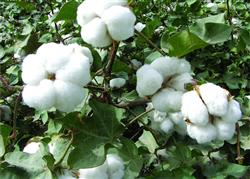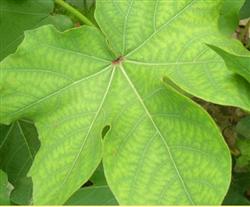How to control pests when planting cotton?

How to control pests when planting cotton? Please introduce the methods of planting cotton can use the following methods to control insect pests: 1. * Integrated control of leaf mites in cotton field * cotton area is one of the areas with the most serious occurrence of cotton leaf mites in China. Especially after cotton planting with plastic film, it creates conditions for cotton spider mites to enter the cotton field in advance, which makes the occurrence of spider mites obviously increase and aggravate, which often causes serious losses to cotton production. (2) the main species of spider mites in cotton field are Turkish spider mite, Dunhuang spider mite, truncated spider mite and cinnabar spider mite, among which Turkestan spider mite is the most widely distributed. Cotton spider mites generally inhabit on the back of leaves, and mainly move, feed and harm on the back of leaves. In years when the overwintering base of mesophyll and chlorophyll is large and the survival rate is high, spider mites generally occur early and seriously in seedling stage. therefore, it is necessary to do a good job in the control of leaf mites from the seedling stage. (2) Agricultural control of autumn ploughing and winter irrigation, rotation with Gramineae crops, planting of mite-resistant varieties, sprinkler irrigation to inhibit leaf mites, protection of natural enemies (such as mite-eating ladybugs, mite-eating thrips, mite-eating gall mosquitoes, flower bugs, etc.), planting disease-resistant varieties, such as Zhong 24, 27, 36 and Zhong 38. (3) seed treatment using 48% chlorpyrifos long-acting sustained-release agent + "Tianda 2116" soaking seed special type seed dressing do not suffocate seeds. (4) for the control of central mite strains, 48% chlorpyrifos long-acting sustained-release agents and other insecticides were diluted to 10 times with water, applied to the red and green parts of cotton stems, with a length of 2 mi 5 cm, and could not be smeared around the stem to avoid drug damage; spot treatment, with 2.0% avermectin + 2.5% cyhalothrin or 48% chlorpyrifos long-acting sustained-release agent + 3% acetamiprid. Field control, medicament is the same as above. The integrated control of spider mites in other cotton areas is the same as above. 2. Comprehensive control of cotton aphids there are six kinds of cotton aphids in cotton fields: cotton aphid, black aphid, cotton long tube aphid, jujube aphid, peach aphid and bean root aphid. The main results are as follows: (1) the agricultural control of cotton and wheat is adjacent to or alternately planted with rape, which changes the single ecological structure of farmland, which is beneficial to the protection and reproduction of natural enemies. (2) to eliminate the source of overwintering aphids one is to eliminate aphids on indoor flowers in winter, and the other is to eliminate indoor and outdoor aphids such as golden tree, pomegranate, grape, walnut, rhamnus and so on. Before the formation of winged aphids in early spring, 3% acetamiprid 1500 times + 2.5% cyhalothrin solution was used to control the disease. Cotton aphid control on bridge host, cucumber, gourd and other vegetables planted in greenhouse and greenhouse are all bridge hosts after cotton aphid overwintering. 2% avermectin 4000 times solution + 2.5% kungfu 1500 times solution should be sprayed as early as possible. (3) for the prevention and control of central aphids, 48% chlorpyrifos long-acting sustained-release insecticides were diluted 10 times with water and applied to the red and green parts of cotton stems with a length of 2ml 5cm, which could not be smeared around the stems to avoid drug damage; the spot film occurred in the period when the control effect was the best, so we should seize the initiative in the prevention and control work. Spot spray with 3% acetamiprid + 2.5% cyhalothrin has good control effect. (4) the prevention and control of large areas must be treated according to the case. According to the actual situation, the urine washing mixture with less lethality to natural enemies can be selected (urea: washing powder: water = 0. 5), 2% avermectin, 3% acetamiprid, 2.5% kungfu, Saidan, Aktai, etc., and the water consumption of urine washing mixture should reach more than 60 kg per mu. 3. Control of Helicoverpa armigera (1) Agricultural control autumn ploughing and winter irrigation, shoveling ridges to remove pupae, removing weeds on the edge of the field, planting corn and sunflowers in ridges. Reasonable fertilization, avoid excessive nitrogen fertilizer, timely spray "Tianda 2116" and potassium dihydrogen phosphate during cotton growth and development, significantly reduce the overwintering insect population density and egg number. Plant new varieties of transgenic insect-resistant cotton. Trapping and killing adults, using high-frequency vibrating insecticidal lamps, sex attractants to trap moths, sweet and sour traps, willow branches and grass traps have a better effect. (2) Biological control to artificially release Trichogramma, destroy cotton bollworm eggs, and protect cotton bollworm natural enemies, such as wasps, cocoon wasps, lacewings, ladybugs, mantis, birds, beneficial bacteria, fungi and viruses. Inhibit the eggs and larvae of cotton bollworm. (3) according to the scientific application of pesticides, according to the control index of 10 first instar larvae of 100 cotton plants, biological pesticides such as BT, 2% avermectin, 25% diflubenzuron, 20% insecticidal hydrazide, insecticidal orders and pesticides with less lethality to natural enemies such as Sedan, 2.5% cyhalothrin and so on were considered. 4. Prevention and control of cotton thrips (1) Agricultural measures: irrigation from autumn to winter, remove weeds on the ridges around the cotton field in early spring, and reduce insect sources. (2) seed dressing with 48% chlorpyrifos long-acting sustained-release EC 0.5kg per 100kg seed + "Tianda 2116" seed soaking 250g. Dry and sow the seeds after mixing, do not sow the seeds. (3) Chemical control in early spring, spraying 2% avermectin 4000 times + 2.5% Kung Fu EC 1500 times on overwintering hosts such as onions and garlic near cotton fields to eliminate thrips breeding base. (4) Pesticide control should be carried out when the number of 100 insects in the seedling stage reaches 15 / 20. In general, the cotton seedlings should be controlled immediately after the emergence of the seedlings, and the medication is the same as above. 5 Comprehensive control of forage bug bugs (1) Agricultural control to eliminate Chenopodiaceae weeds around the field, reasonable arrangement of adjacent cropping in cotton field, not adjacent to sugar beet, spinach, rape, alfalfa, flax and wasteland, but preferably adjacent to wheat. Pay attention to irrigation and fertilization, timely chemical control, spray "Tianda 2116" cotton special type, prevent excessive growth of cotton, head water should be late, reasonable application of chemical fertilizer, prevent excessive nitrogen fertilizer. (2) 2% avermectin 4000 times solution + 2.5% kungfu EC 1500 times solution was sprayed around the cotton field to eliminate the breeding base and the control effect was good. (3) Pesticide control should be carried out when the number of 100 insects in the seedling stage reaches 15 / 20. In general, the cotton seedlings should be controlled immediately after the emergence of the seedlings, and the medication is the same as above. Click to get more cotton planting technology click to get more food crop planting technology
- Prev

How to manage the boll opening period of cotton?
How to manage the boll opening period of cotton? Please guide the cotton boll opening period can refer to the following methods for management: 1, skillfully grasp fertilizer and water to promote the movement of nutrients. One is extra-root topdressing. For cotton fields with premature loss of green leaves and early senescence, 50-60 kg urea solution of 1%-2% per mu was sprayed on the leaves to prolong the leaves.
- Next

What is the difference between cotton Fusarium wilt and Verticillium wilt?
What is the difference between cotton Verticillium wilt and Verticillium wilt? Please introduce the difference between cotton Fusarium wilt and Verticillium wilt as follows: cotton wilt can occur in the whole growth and development period of cotton, but it occurs more seriously in the seedling stage, and it will also occur in the adult plant stage if favorable conditions are encountered. Ralstonia solanacearum: leaf process.
Related
- The first cup of black tea in spring, the flavor and history of tea gardens in Kenya, Africa
- The computer can not only choose potatoes, but also grow tea rice. AI will grow winter oolong tea champion.
- It is not only the inflated tea bitten by insects, but also engraved with the four seasons tea in Beipu.
- The Oriental Beauty Tea Festival in Zhuxian County takes the stage at the weekend to experience the plus-size feast of oil tea.
- & quot; Oriental Beauty Tea & Exploration of Emei in Hsinchu, the hometown of quot;
- The new variety of strawberry "Tainong 1" dessert is the first choice with mellow aroma. Crimson gorgeous
- History of Tea in Taiwan: from Wild Inner Mountain to Export Tea Garden
- Two types of Taiwan Oriental Beauty Black Tea won the British three-Star Award for Childhood Tea Xiang Zhang Jiaqi changed from pilot to champion tea maker.
- Banana species and varieties: the planting history of Taiwan Xianren banana and dwarf banana is long, is banana disease resistant?
- Coffee planting Technology: Qianjie Coffee from Seedling to harvesting

